Central Asia Artists
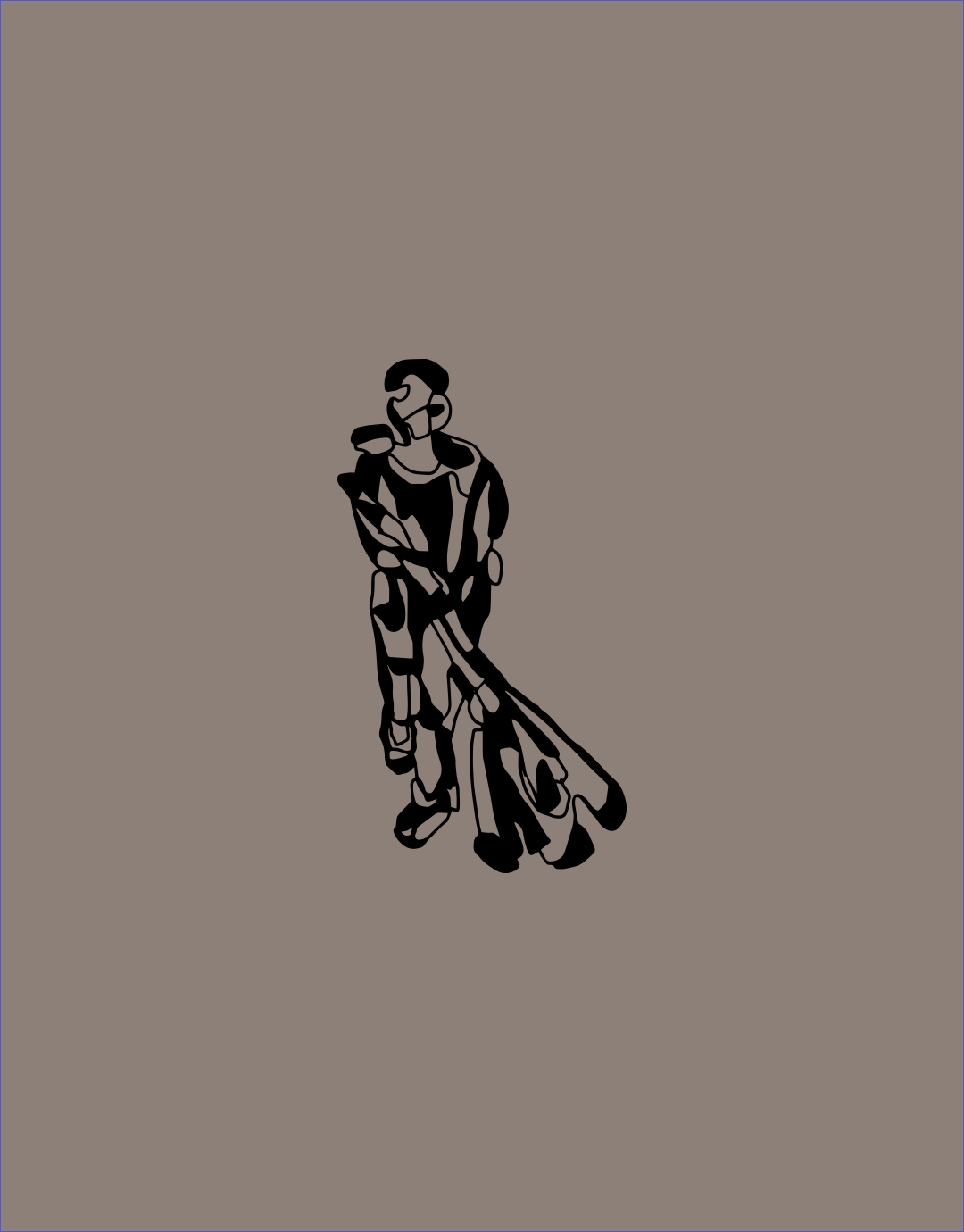 Munara Abdukakharova is an emerging artist with an architectural background.
Munara Abdukakharova is an emerging artist with an architectural background.
“The art I make is mostly narrative, based on my everyday life, and depicts broader social issues in Kyrgyzstan.”
Her works address contemporary Kyrgyz self-identity and the connection to the nomadic heritage. In addition to figurative art, Munara also works with more abstract techniques in textile art. She frequently uses the main fabric of nomadic culture – felt.
“In recent decades, my country has become the land of migrants who leave their homes for work, while leaving their children behind. They work hard, not seeing their families for years, saving their money, and sending all their earnings back home. The economy of Kyrgyzstan lives mainly on the money transfers that migrant workers send to their homeland. So these are the Heroes of today’s Kyrgyzstan.


“My work is mainly about women. I love studying the female gender, their bodies, and their curves. Everything about women seems to be from another planet.”
Zhandos Alibaev started to study art at a boarding school at the age of 12 and later graduated from the Academy of Arts in Kyrgyzstan as a graphic artist. Today he works in painting, drawing, and sculpture.
“I lived in the mountains for 33 years, studying nature and the course of the life around me. In my paintings, I strive to combine nature, the female gender, and all that is beautiful in this world; I am in search of the untapped and unseen. The journey of an art nomad.”
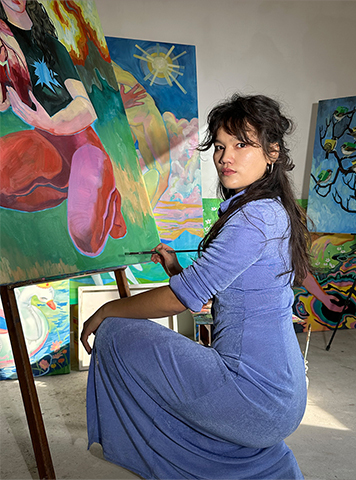
Born and raised in Bishkek, Darika Bakeeva left Kyrgistan at the age of 18 to study Costume and Textile in St. Petersburg. In her final work, she examined symbols surrounding her in her post-soviet reality which resulted in three embroidered tapestries, a textile tryptich.
“At the moment I work mainly with traditional materials, oil on canvas. In my work, I try to convey the reality that surrounds me in a special way, in some cases even change it a little in order to immerse the viewer in a peculiar mood.”
Often, she deals with situations she experienced herself relating to topics of forced migration and reoccurring symbols that reflect on the sense of nostalgia and traditions.
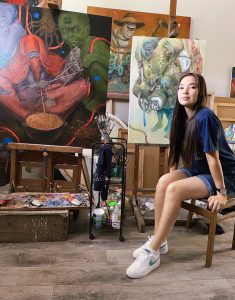
Zhyldyz Bekova is a Kyrgyz painter and digital illustrator. She creates artwork for exhibitions in watercolor, graphic, or mixed media and has been painting in oil since 2020. The technique of painting adds expressiveness to her works and her compositions on canvas look as if they are coming to life.
In her subjects, she uses themes from myths, customs, and traditions of the Turkic peoples of Central Asia. She loves to convey Kyrgyz national motifs using their unique cultural heritage. Her ancestors had a rich spiritual heritage – shamans, healers, and fortune tellers. Hence her attraction to mystical stories and otherworldly visions. She wants to pass on her heritage in her paintings, the time, man, and his place in this system of values.
“I am concerned about how man forgets the mistakes of the past, we forget the true human spiritual and moral values. We ourselves are eager to destroy everything around us with all our might. Nature itself gives us the opportunity to live in harmony, but we ignore it and look for different ways to be superior to it.”
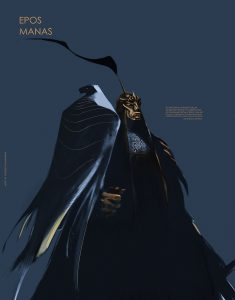
“I believe that people are one of the components of nature and they can chose to represent the best side of humanity – helping each other in difficult moments through love and mutual respect.”
When looking at the body of work of Shakhnazar, themes like national Kyrgyz legends, stories and traditions are very present. Like a lot of artists in Kyrgyzstan, Shakhnazar left his home country to study abroad and came back to Kyrgyzstan after an extensive time of traveling. He now mainly works in the field of animation, painting, drawing and computer graphics.
In Berlin, he will show “Nomadic Migration”, an animated movie about the dynamics of migration deeply rooted in Kyrgyz history.
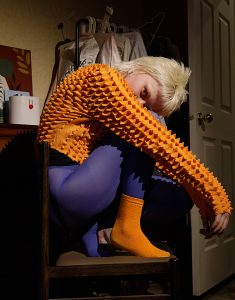
Meet Zheldenbayeva Ieeza, a versatile artist from Kyrgyzstan who has a unique artistic view that extends beyond traditional painting to photo and video art.
Growing up in a small village, she walked to school and carried water home with buckets, but her passion for art led her to become an interior designer and later explore different artistic areas such as production and costume design, styling, and installations.
With her art, she aims to convey the meaning behind every object, often using them as a tool to draw a picture.
Zheldenbayeva’s work is deeply influenced by her personal experience as an immigrant, and how her cultural background shapes her identity as an artist.
Currently based in Kazakhstan, she continues to explore new creative horizons while going through the emotional challenge of homesickness.
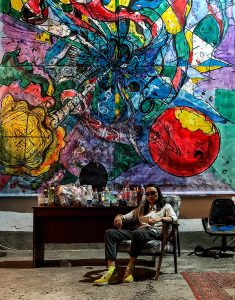
“In the phenomena of nature, there is no such thing as boundaries. There are no limits, no permanence, and no stability. Everything is changing. Mountains change their position, rivers change their course and are renewed. We should follow nature and throw away all boundaries to be closer to each other and nature. It seems we have overcome many borders, linguistic, geographical, etc. But there is still a big gap between us. To close this gap, we must become one with nature. In nature, there is no total destruction. There is only creation. Even destruction brings forth new life. We should forget our prejudices and be kinder to nature and each other to achieve harmony.”
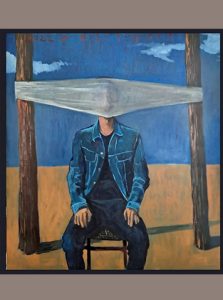
Doorov Islam was born in 1997 and grew up in the Batken region of Kyrgyzstan, the child of a poet and journalist. In 2011 he entered art school and continued his studies at the T. Sadykov School of Art.
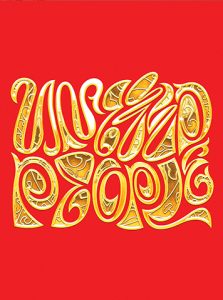
Sultan Jumataev “GEO” is a Kyrgyz graphic designer who immigrated to Canada with his family at a young age. There, he pursued his passion for digital drawing and studied graphic design at UFV.

Gulzat Matisakova, is a documentary filmmaker interested in the stories of the oppressed. She describes her approach to filmmaking as personal in perspective and political in scope. The stories she tells are intimate and focused on highlighting social injustices. She tries to make films in the spirit of radical softness when the well-being of the characters must be paramount, even if that means the film might not get made.
Gulzat has studied documentary film in the fully funded Erasmus Mundus master’s program “Doc Nomads” and since 2017, she has been based in Hamburg and Berlin. For the Berlin Bishkek Art Weeks She will be presenting a short movie she has previously shown at “Kunsthaus Hamburg” based on her upbringing in Kyrgyzstan.
“Being in one position, a person strives for another, always interested in the other side. There is a constant flow between these extremes. If mentally it is a stream of thoughts, energy, information, then physically it is people migrating in search of a good life.”
The clear geometric shapes in certain paintings lead him to the topics of constancy and stability, posing into question very innate concepts such as duality and contradictions.
Omurbek Karataev has, amongst others exhibited in the Modern Art Museum in Cyprus, the State Museum of Fine Arts in Tatarstan and various galleries and private collections nationally and internationally.
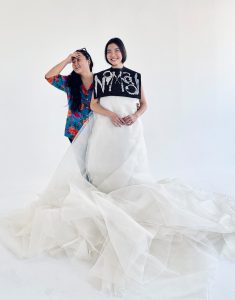
Altynai Osmoeva is a Kyrgyz multimedia artist who primarily combines authentic textiles, fashion, graphics, performance, installation, sculpture, photography, light, and video.
She graduated with honors from the prestigious Central Saint Martins College of Art and Design and completed internships at the world-famous fashion houses of Alexander McQueen and Erdem Mariouglou.
Inspired by nomadic culture, it’s philosophy, and aesthetics, she founded the fashion label ALTAI OSMO for women’s clothing and fashion accessories. Her exclusive pieces combine a minimalist approach where textiles reflect world heritage and craftsmanship from around the world.
Altynai has received several coveted global awards, including Vogue Young Talents (Milan, 2014); International Contemporary Crafts Biennale (Nantong, 2014), and is the recipient of several UNESCO Award of Excellence certificates. She is a member of the World Crafts Council.
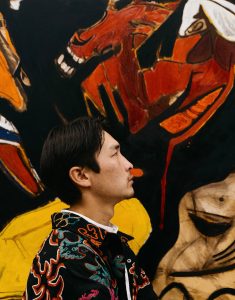
Dastan Temirov is a Kyrgyz painter and graphic artist who studied industrial graphic design at the National Academy of Arts.
His childhood in Kyrgyzstan’s mountainous landscapes, family traditions, and fairy tales inspired his love for art.
He uses color, form, and texture to create images that convey emotional depth and meaning.
He has participated in many exhibitions, and his work has no specific theme or style.
Dastan believes that art should be free and not limited by rules or styles.
He creates compositions to initiate a dialogue with the viewer and encourages people to look at the world from a new perspective and explore their emotions through his paintings.
Dastan’s creativity is free from the boundaries of time and space, which allows him to freely express himself and experiment with new and unexpected ideas and approaches.
Over the years, Dastan has participated in many exhibitions, including republican, international, and group ones.
He joined the Union of Artists of the Kyrgyz Republic in the winter of 2021, marking a significant milestone in his artistic career.
In the spring of 2022, he held his first solo exhibition in Bishkek, where he showcased his latest works.
In the summer of the same year, he took part in the international plein air exhibition “Siberia-Kyrgyzstan.”
Dastan’s art is all about exploring the elements of form, color, and texture that interact with each other, creating images that are filled with meaning and emotional depth.
He hopes that his art will inspire viewers to see the beauty and harmony in the world around us.

“My art is an attempt to perceive the world in a rational way at the level of feeling. I strive to express my aesthetic concept through graceful forms and experiment with different materials to discover their potential and unleash my creativity.”
Altai Usenov‘s interest in art began his childhood “I absorbed the energy of nature in my small homeland – Issyk-Kul.” After studying at the T. Sadykov Academy of Arts, he participated in many collective, and international exhibitions and also took part in a symposium in North Cyprus at the Cyprus Museum of Modern Art. “
“My work reflects my world view and I strive to express how I see this world through my art. I believe that art should be sincere and inspiring through its beauty. I love experimenting with different techniques to create unique and interesting works of art.”
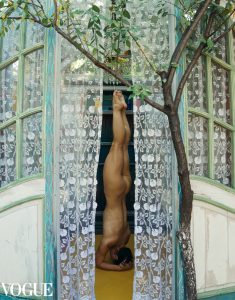
“I am a permanent creative migrant”.
Introducing film director, photographer, multimedia artist, and performer Ivan Ryaskov. He was born in Kazakhstan, and has traveled for more than half of his life, exploring the regions of Central and Southeast Asia. “Over time, I began to feel and understand that the cultural traditions and history of our nomadic people are closer to me than anything else.”
Currently, the artist is working on researching the intangible cultural heritage of the people of Central Asia, and we are excited to see what he has prepared for the Berlin Bishkek Artweeks.

“What causes migration and emigration? Well, in the current time, tragedy comes to mind. But we all know it, we are on the road in search of comfort, security, money, and fame. My work “On the Road” also touches on the theme of migration. I am on the road, I go, we all do, we all go in the wheels of the modern world…”
“I try not to limit myself, I work with painting, graphics, sculpture, and photography. With these objects, I try to express myself in my own language, I represent what I see, and what I feel.
I prefer to work on current, suffering issues. Through my work with different art forms, I aspire to translate the themes into a global, diverse language.”
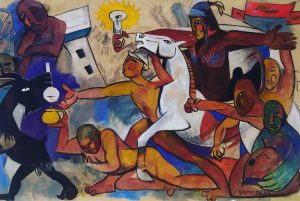
Berlin Artists
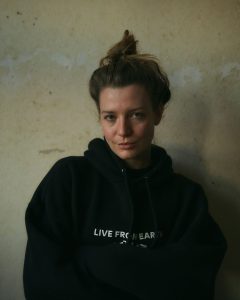
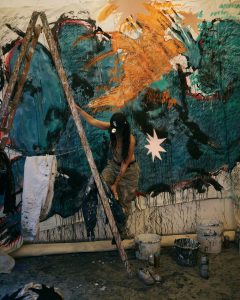

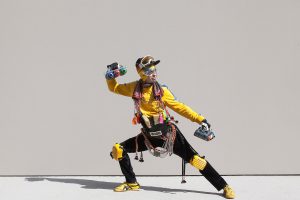
Kadir “Amigo” Memiş is a creative artist whose childhood memories inform his work as a dancer, choreographer, and calligrapher. Growing up as a shepherd in a village of 300 people in Anatolia, he moved to Berlin with his parents in 1984, where he discovered hip-hop culture and breakdance.
As an urban nomad, Amigo immersed himself in the city’s diverse culture, which he translated into his unique movements. He is one of the pioneers in Germany who combined hip-hop with other elements, like traditional Turkish folk dance zeybek, which he fused with breakdance to create Zeybreak.
After graduating from high school, Amigo trained as a technical draftsman, which influenced his choreography with its emphasis on precision. His calligraphy, which he has been producing for over thirty-two years, also reflects this attention to detail. The black lines of his drawings move impulsively yet thoughtfully, creating circles and setting points. In his work, the boundaries between performance and visual art become increasingly blurred.
Amigo is also active in the street art scene and was part of the exhibition project Backjumps – The Live Issue in Berlin in 2003. The project explored the interfaces of street art, aerosol culture, and hip hop, presenting the contemporary developments of these art forms. Amigo was influenced by Berlin writers Akim, Tagno, and Zast of the legendary Jazzstyle Corner. In all his work, Amigo strives to achieve a form in which intuition and reflection are in harmonious accord with each other.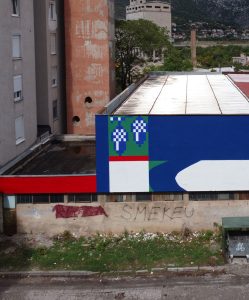
“I draw my inspiration primarily from contemporary everyday objects, artifacts and memorabilia.”
Kartelovic’s often large-scale works break down the design boundaries between traditional craft and digital design and transfer them into a new context, with which he addresses the interplay between nostalgia and the present.
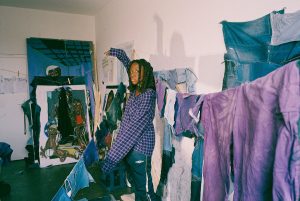
Beverly Destiny Renekouzou is a painter, performer, and artistic director.
Her work is deeply rooted in her experiences of moving by different social classes and political contexts. She had explored life between France, Canada, the United Kingdom, Central African Republic, and Germany.
Through an intersectionality lens, Renekouzou’s large-scale paintings depict a lifelong process of healing, where black women suspend time to reflect in a contemplative posture.
Thus, in a spirit of collecting and honoring old lives memories, she dresses up their mediums of expression with second-handed pieces of jeans carrying multiple individual stories. A reason to protect the widespread vulnerability and melancholy of these characters’ paintings with an intermediate presence of wisdom.

Moritz Lindur is at the forefront of an emerging generation of artists in Berlin.
His career has taken him from a business school education to tattooing and, in recent years, to canvas. As a tattoo artist, he traveled around the world, gathering perspectives and experiences and permanently inscribing them into the skin of those who seek him out.
Lindur’s work is a mirror that sincerely shows case studies of society and what it means to be a citizen of this current edition of civilization. This is not to say that his work is easy. It isn’t. His art is rich with “unseen” detail. An intentional challenge that the artist proposes directly to the viewer, a gift to the hunter of discrete detail.
By taking time to observe, one can explore a world rich with generational differences, injustices, political chaos, and issues of privilege. His medium of choice, the ballpoint pen, is directly related to one of humanity’s most natural yet complex forms of expression: language and the written word.
In response to this phenomenon, Moritz Lindur has developed a visual language all his own. A language that allows the viewer to see everything – or nothing at all.
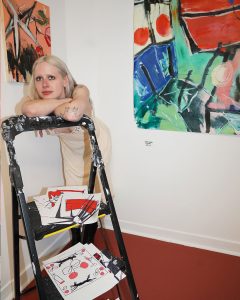
I make my home within a dream world, one that feels familiar to me as I often don’t feel that I am here [physically]. Even if I am on the move, I subconsciously input objects of nostalgia and what I soak up from those immediately around me creating attachment. Although I feel like I’ve run from home, I feel bound by it and how it’s given me strength even if it’s baggage I’ve left behind.

Apl315 started off as a graffiti writer in the early 2000’s and to date had numerous solo exhibitions in the Ukraine and abroad. His education is key to understanding the artist’s individual strategy: as a professional entomologist educated at the Odessa State University’s invertebrate department, he researched organic aesthetics and created images, which, from afar, looked like the silhouettes of insects.
While continuously working on the streets, Apl315 began to move into new territory and migrated to post-graffiti practices. In the second half of the 2010s, he began using alternative media when creating new works. In interdisciplinary art projects, the artist combines his entomologist background with the newly acquired passion for amateur archaeological research and metal detection. In his case, the metal detector becomes a tool of artistic expression as most of his newer artworks are assembled from objects found on the streets, beaches and in parks. Old nails, coins and rusted cans tell the stories of bygone days, referring to the classical baroque vanitas genre which was focused on the transience of life. His most recent projects are dedicated to the war-torn areas in Ukraine and the Balkans. In large-scale multimedia installations, he asks questions about the fragility of modern-day ecosystems and uncovers deep historical traumas of Eastern and South-Central Europe.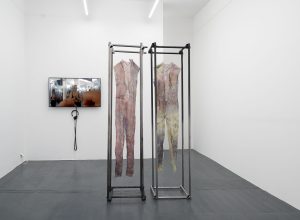
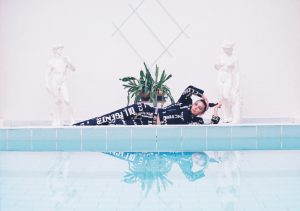
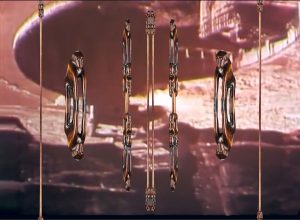
Heiko-Thandeka Ncube is an artist, writer and filmmaker based in Berlin. His practice investigates how cultures derive meaning through suffering and how narratives, drawn out of collective memories, coincide with acts of violence. Therefor Ncube’s work unfolds along the intersections of political oppression, the Abrahamic religions and Bantu mythology, in particular the lines along his Ndebele ancestry. Ncube has exhibited works at Kunstquartier Bethanien, Floating University and recently premiered a film at the 73. Berlinale Forum Expanded.

Junge aus West Berlin.
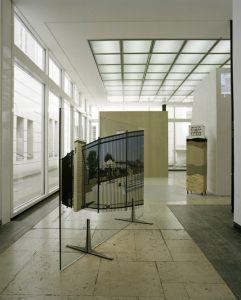
Vincent Grunwald is a visual artist who works in multimedia, using writing and language to critically examine the mechanisms of control, organization, and punishment in our present. His work has been presented internationally in cities such as Buenos Aires, New York, Belgrade, Moscow, and Paris. Later this year, exhibitions of his work will be held in Milan and New York.
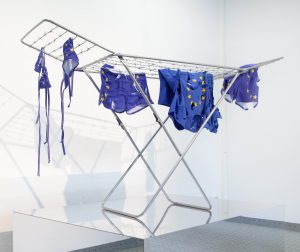
Tony Futura is an artist based in Berlin who works in a multidisciplinary manner and focuses on critically reflecting on current social issues. The artist primarily concentrates on the excessive materialism, Western pop culture, and the so-called ‘First World Problems’ of our modern lives. Futura critiques them in often ironic ways and ruthlessly exposes their weaknesses. In his sculptural and installation works, iconic motifs and objects are frequently found.
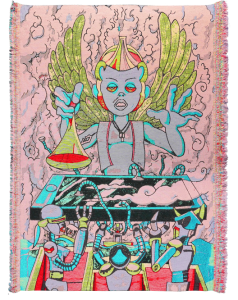
„Bigoteacrochet“ (Tino) an berlin based Artist from Chile. He is a member of WEBEREI, a collective, that produce textile with an artist inclination. With his work he experiment with different visual techniques and translate everything he wants in a textile language.
Thomas Korn

Niklas Apfel, is an interdisciplinary artist based in Berlin. While focusing on graphic design and illustration in his professional work, Apfel explores contrasting themes in his personal artistic endeavors. Working in his studio K18 at Südstern, he creates large-scale canvases through dynamic and sport-like sessions.
Apfel’s approach is characterized by abstracted and transformed depictions of figures, scenes, and typography. In his Master’s thesis, he explores the proportions of figures, aiming to create a spatial installation to be presented at the 2023 exhibition.
Malte Fröhlich, is a visual artist renowned for his documentary media practices. Based in Berlin and Cologne, his works delve into captivating narratives and thought-provoking concepts.
Hisartistic journey has taken him from working as a director and technical assistant in theater and media productions to studying at prestigious art institutions across Europe. With a focus on performative works and interventions in public spaces, Fröhlich’s art invites viewers to engage with compelling experiences.

